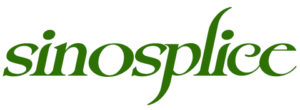puns
-
1. 2022-05-11 10:55:39
-
2. 2022-04-14 15:49:46
-
3. 2021-12-01 11:12:31
-
4. 2021-10-27 11:07:27
-
5. 2021-01-20 10:14:15
-
6. 2020-11-11 09:36:18
-
7. 2020-09-15 11:14:34
-
8. 2020-07-14 10:02:03
-
9. 2020-05-26 10:40:23
-
10. 2020-02-27 05:52:00
-
11. 2019-08-15 09:30:31
-
12. 2019-05-15 10:07:32
-
13. 2019-04-23 09:48:52
-
14. 2018-11-27 08:39:47
-
15. 2018-03-27 09:34:43
-
16. 2017-09-05 09:47:57
-
17. 2017-06-01 08:46:48
-
18. 2017-02-01 14:28:36
-
19. 2017-01-26 11:19:41
-
20. 2016-12-06 08:27:04
-
21. 2016-11-15 07:45:26
-
22. 2016-10-25 09:17:58
-
23. 2016-07-07 09:03:22
-
24. 2015-09-01 09:50:41
-
25. 2015-08-12 09:35:51
-
26. 2015-05-01 11:12:01
-
27. 2014-12-05 10:40:50
-
28. 2014-09-08 11:50:20
-
29. 2014-02-04 08:53:02
-
30. 2013-11-26 08:50:46
-
31. 2013-10-15 09:17:07
-
32. 2013-06-23 18:46:46
-
33. 2012-01-04 10:57:50
-
34. 2011-07-12 08:52:32
-
35. 2011-05-26 08:47:22
-
36. 2011-04-14 08:57:41
-
37. 2010-07-17 10:32:27
-
38. 2009-08-20 09:06:14
-
39. 2009-05-31 19:49:02
-
40. 2009-04-11 15:38:05
-
41. 2009-03-26 15:35:07
-
42. 2007-08-10 07:54:33
-
43. 2006-11-10 08:39:57
-
44. 2006-03-05 11:49:41
-
45. 2005-09-22 08:38:35
